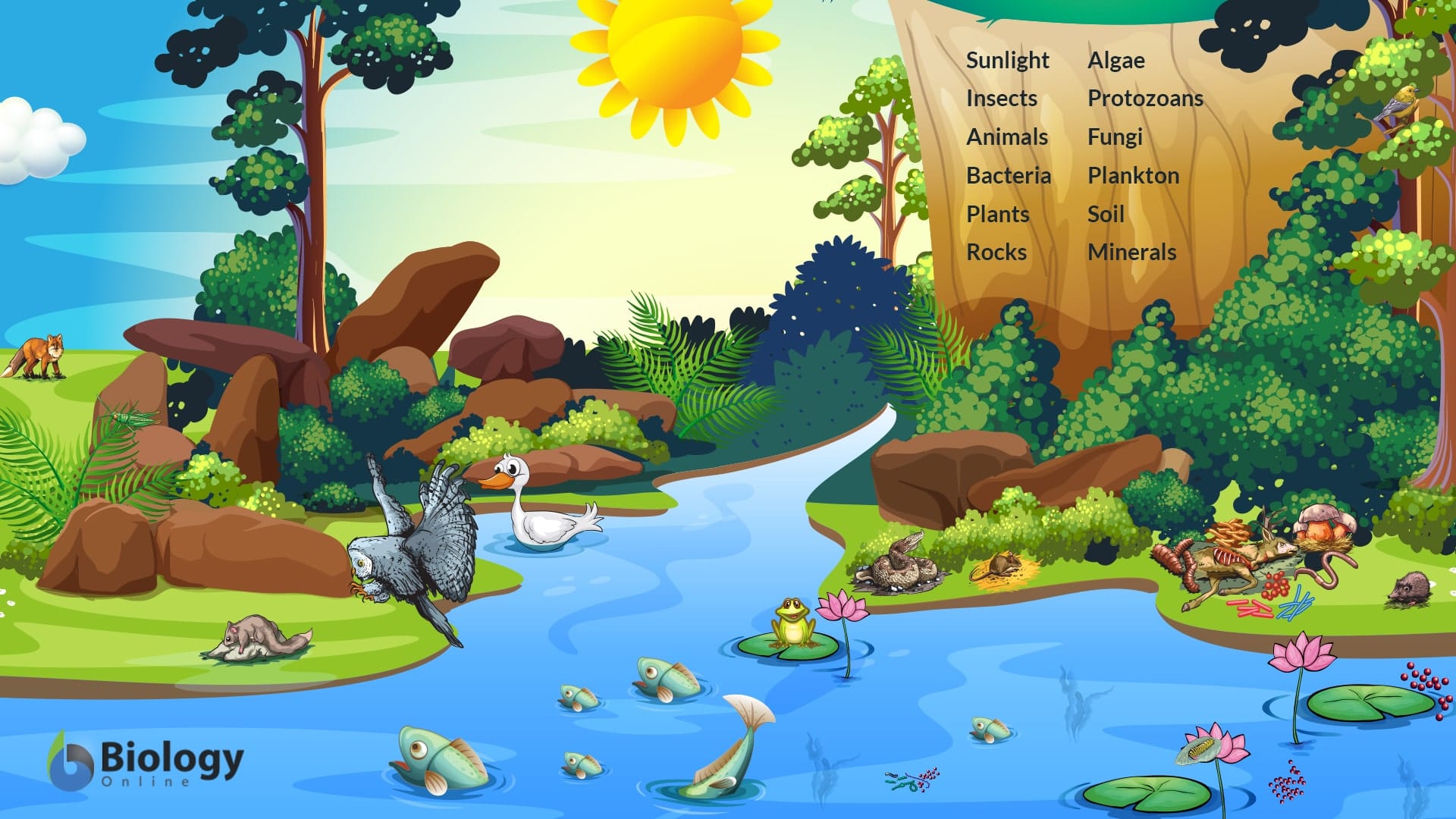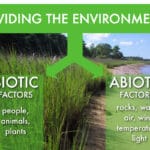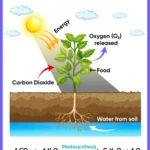How Abiotic Factors Affect Your Comfort (and How to Outsmart Them)
Imagine this: you’re braving the elements, a seasoned explorer navigating diverse terrains. The sun peeks through the clouds, offering a welcome warmth. A gentle breeze carries the scent of pine, reminding you of the nearby shelter you’ve built. These natural elements – temperature, wind, sunlight – aren’t just part of the scenery; they’re abiotic factors that directly influence your comfort, even your survival. This guide delves into the fascinating interplay between your body and the environment, equipping you with the knowledge to stay warm and protected, no matter where your adventures take you.
Why Understanding Abiotic Factors Is Your Secret Weapon
Ever wondered why a breezy day feels colder than the thermometer suggests? It’s all about abiotic factors – the non-living components of our environment. These factors constantly interact with your body, impacting your ability to maintain a stable internal temperature.
Think of your body as a finely tuned machine, constantly working to stay within a narrow temperature range. Abiotic factors can either help or hinder this process:
- Temperature: The most obvious player. Cold temperatures sap your body heat, while extreme heat can lead to overheating.
- Wind: A silent thief, wind whisks away the thin layer of warm air surrounding your skin (known as your “microclimate”). This speeds up heat loss, making you feel colder.
- Humidity: High humidity, like that sticky summer air, prevents sweat from evaporating efficiently. Because evaporation is a key way your body sheds heat, high humidity can lead to discomfort and overheating.
- Sunlight: Nature’s radiator. Direct sunlight delivers radiant heat that warms your skin, offering a welcome boost in chilly conditions.
Strategies for Superior Warmth: Dress, Seek, and Adapt
Mastering abiotic factors isn’t about passively withstanding the elements; it’s about actively working with them to stay comfortable. Here’s how:
1. Dress Like a Thermal Engineer:
- Layer Up: Think of your clothing as a personalized insulation system. Multiple layers trap air, creating a barrier between your warm body and the cold air.
- Base Layer (Wicks Moisture): Choose moisture-wicking materials like wool or synthetic fabrics designed to pull sweat away from your skin. Avoid cotton – it absorbs moisture and turns icy cold against your skin.
- Insulating Layer (Traps Heat): Fleece, wool sweaters, or down jackets are excellent choices. These materials excel at trapping warm air.
- Outer Layer (Blocks Wind and Water): Your shield against the elements. Opt for waterproof and windproof materials to prevent heat loss from wind and precipitation.
2. Shelter: Your First Line of Defense:
- Outsmart the Wind: Even a small barrier can dramatically reduce heat loss. Find natural windbreaks like trees, large rocks, or even a dip in the terrain. If possible, build a temporary shelter using branches, leaves, or a tarp.
- Stay Dry: Water is a heat thief. If rain threatens, seek cover immediately. A simple tarp, poncho, or even large leaves can make a world of difference.
3. Embrace the Power of External Heat:
- Fire Up: When conditions turn extreme, a reliable heat source can be a lifesaver. Learn basic fire-starting techniques and practice in a safe environment before venturing out. Always follow fire safety guidelines and be mindful of your surroundings.
- Portable Heat: Hand warmers (chemical or reusable) provide a convenient heat boost for fingers and toes. Portable heaters, if you have access to power, can offer additional warmth in shelters.
4. Become a Heat-Generating Machine:
- Get Moving: Exercise is nature’s heater. Physical activity increases your heart rate and blood flow, generating internal heat. If you feel yourself getting cold, take a brisk walk or do some jumping jacks to boost your internal furnace.
5. Fuel Your Internal Engine:
- Eat for Warmth: Your body needs fuel to produce heat. Consume calorie-rich foods, especially those high in healthy fats and carbohydrates, to keep your internal engine running strong.
- Hydration is Key: Dehydration can impair your body’s ability to regulate temperature effectively. Carry plenty of water and drink regularly, even if you don’t feel thirsty – especially in cold environments where dehydration can sneak up on you.
Bonus Tips:
- Microclimate Mastery: Seek out microclimates within your environment. A sunny spot on a cold day or a sheltered area protected from the wind can offer a surprising amount of warmth.
- We Are Adaptable: Did you know that people living in colder regions tend to have physical adaptations to conserve heat? Over time, our species has developed remarkable ways to thrive in diverse climates.
Remember: Staying warm in challenging conditions is a collaboration with nature. By understanding how abiotic factors influence your body heat, you can make informed decisions and enjoy the adventure, no matter the weather!
What Abiotic Factors Affect Temperature?
Now that you understand how important abiotic factors are for your comfort, let’s explore some of the key players that influence temperature:
- Latitude: The angle at which sunlight strikes the Earth varies with latitude. Places near the equator receive more direct sunlight, leading to warmer temperatures. As you move towards the poles, sunlight becomes more indirect, resulting in cooler temperatures.
- Altitude: Think of climbing a mountain; as you ascend, the air becomes thinner and colder. This is because air pressure decreases with altitude, and thinner air is less efficient at holding heat.
- Wind: A master of disguise, wind can make it feel much colder than the actual air temperature due to the wind chill effect. Wind increases heat loss through convection, carrying away your body heat more rapidly.
- Water: Water is a temperature regulator. It has a high heat capacity, meaning it can absorb or release large amounts of heat without drastic temperature changes. This property helps moderate temperatures in coastal areas, preventing extreme fluctuations.
- Soil: The characteristics of soil, such as color, texture, and moisture content, also influence temperature. Darker soils absorb more heat, while lighter soils reflect more sunlight. Moist soil tends to be cooler than dry soil because water absorbs heat as it evaporates.
The interplay of these abiotic factors creates the diverse climates we experience across the globe.
Is Heat an Abiotic Factor?
Absolutely! Heat itself isn’t an abiotic factor, but temperature – a measure of heat energy – is a fundamental abiotic factor influencing ecosystems. Temperature directly affects the physiological processes of organisms, including:
- Metabolism: The chemical reactions within organisms are temperature-dependent. Most organisms have optimal temperature ranges for metabolic function.
- Growth and Development: Temperature influences the rate at which organisms grow and develop. Extreme temperatures can slow down or even halt these processes.
- Survival: Every species has a temperature tolerance range. Temperatures outside of this range can lead to stress, reduced fitness, and even death.
The distribution of species across the globe is largely determined by temperature gradients. For example:
- Deserts: Characterized by scorching temperatures, intense sunlight, and limited water availability, deserts are home to specialized plants and animals adapted to survive these extreme conditions.
- Tropical Rainforests: With their warm temperatures year-round, high humidity, and abundant rainfall, tropical rainforests boast an incredible diversity of life. These ecosystems are incredibly productive due to the favorable temperatures and abundant moisture.
- Arctic Tundra: Frigid temperatures, low sunlight, and frozen ground (permafrost) characterize this harsh environment. Plants and animals in the tundra have evolved remarkable adaptations to cope with these extreme abiotic factors.
What are the Abiotic Factors in a Cold Environment?
Cold environments, such as the Arctic, high mountains, and deep oceans, present unique challenges for life. Let’s delve into the specific abiotic factors that shape these extreme habitats:
1. Temperature: The defining characteristic, with persistently low temperatures that impact all aspects of life. Organisms in these environments have evolved a range of adaptations to survive the cold, including:
* Thick Fur or Feathers: Provides excellent insulation to trap body heat.
* Blubber: A thick layer of fat beneath the skin of marine mammals acts as insulation and an energy reserve.
* Hibernation: A state of reduced metabolic activity during winter allows some animals to conserve energy when food is scarce.
2. Sunlight: The intensity and duration of sunlight vary drastically in cold environments.
* Polar Regions: Experience periods of near-constant daylight in summer and near-total darkness in winter. These dramatic shifts influence plant growth cycles and animal behavior.
* High Altitudes: Receive intense solar radiation due to thinner atmosphere. Organisms must adapt to high UV exposure.
3. Precipitation: Cold environments tend to be dry, with most precipitation falling as snow. This limited water availability poses challenges for both plants and animals.
* Water Conservation: Organisms have evolved strategies to minimize water loss, such as specialized leaves and efficient kidneys.
4. Wind: The wind chill factor amplifies the effects of low temperatures, making it feel even colder. Strong winds can impact plant growth and force animals to seek shelter.
5. Permafrost: A defining feature of polar regions, permafrost is permanently frozen ground. This frozen layer affects drainage, plant root depth, and nutrient cycling. Thawing permafrost, driven by climate change, is a major concern due to the release of greenhouse gases.
6. Ocean Currents: The movement of ocean currents plays a major role in regulating global temperatures and distributing heat. In polar regions, cold currents influence sea ice formation and marine ecosystems.
7. Soil Composition: The slow decomposition rates in cold environments lead to thin, nutrient-poor soils. Plants have adapted to these conditions by forming symbiotic relationships with nitrogen-fixing bacteria.
Understanding the complex interplay of these abiotic factors is crucial for predicting how climate change might impact these delicate ecosystems.
By unraveling the mysteries of abiotic factors, we gain a deeper appreciation for the resilience of life and the interconnectedness of our planet. Whether you’re an avid adventurer or simply curious about the natural world, knowledge is your most valuable tool. Stay warm, stay curious, and explore responsibly!
- Crypto Quotes’ Red Flags: Avoid Costly Mistakes - June 30, 2025
- Unlock Inspirational Crypto Quotes: Future Predictions - June 30, 2025
- Famous Bitcoin Quotes: A Deep Dive into Crypto’s History - June 30, 2025
















